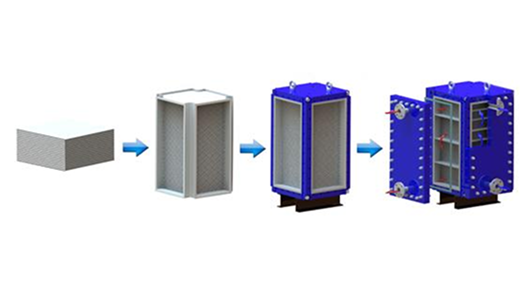Is Your Heat Exchanger Heating Working Hard Enough?
What Are the Signs of an Underperforming Heat Exchanger?

A furnace's heat exchanger is the core component responsible for warming a home. When it underperforms, it produces clear warning signs. Homeowners should learn to recognize these symptoms to address potential issues before they become dangerous or costly.
Symptom 1: Uneven Heating and Cold Spots
One of the first indicators of a problem is inconsistent temperatures throughout the house. A properly functioning system distributes warm air evenly. A damaged or blocked heat exchanger disrupts this process. It fails to transfer heat to the circulating air effectively. This results in some rooms feeling comfortable while others remain stubbornly cold, no matter how high the thermostat is set. This uneven performance signals that the core of the furnace is not doing its job.
Symptom 2: Spiking Energy Bills
A sudden, unexplained increase in heating costs often points to a struggling furnace. The system must work harder and run longer to produce the same amount of warmth when its efficiency drops. A compromised heat exchanger is a primary cause of this inefficiency. It wastes fuel because a significant portion of the generated heat is not transferred into the home's air. The furnace compensates by extending its run cycles, leading directly to higher gas or electricity consumption.
Pro Tip: Homeowners should track their monthly energy usage. A sharp rise that does not correspond with a severe cold snap or a change in thermostat settings warrants an immediate system inspection.
Symptom 3: Visible Rust or Cracks on the Unit
A visual inspection can reveal serious problems with the heat exchanger. Metal components should appear clean and intact. Any signs of degradation are a major cause for concern. Homeowners or technicians may notice:
·Corrosion or Rust: Orange or reddish-brown flakes indicate that moisture is interacting with the metal, often due to improper ventilation or internal condensation.
·Cracks or Fractures: These can be hairline fissures or larger splits in the metal walls. Thermal stress from constant heating and cooling eventually causes the metal to fatigue and break.
A cracked unit is a severe safety hazard. It can allow dangerous combustion gases, including carbon monoxide, to mix with the breathable air circulating in the home. This makes effective heat exchanger heating impossible and creates a life-threatening situation.
Symptom 4: Strange Rattling Noises or Odd Smells
Unusual sounds and odors from the furnace area should never be ignored. While a furnace makes noise during normal operation, certain sounds indicate a problem. A rattling or popping noise may suggest a crack in the heat exchanger, as the metal expands and contracts unevenly when heated.
Odd smells are an even more urgent warning sign. A strong odor of rotten eggs near the furnace likely indicates a natural gas leak and requires immediate evacuation and a call to the gas company. A sharp, unpleasant smell when the heat kicks on could be a sign that the heat exchanger is overheating and burning off dust or other particles at an abnormally high temperature.
Why Your Heat Exchanger Heating Performance Is Declining
Understanding why a heat exchanger fails helps homeowners prevent premature breakdowns. Three primary factors contribute to its declining performance: restricted airflow, neglected maintenance, and old age. Addressing these causes can extend the life of a furnace and ensure it operates safely.
Cause 1: Blocked Airflow from Dirty Filters
A dirty air filter is the most common cause of furnace problems. The filter's job is to trap dust and debris. A clogged filter severely restricts the flow of air moving through the system. The heat exchanger cannot transfer its heat to the air effectively. This causes the component to overheat, placing extreme stress on its metal walls and leading to cracks or warping.
System Alert: An overheating heat exchanger is a primary cause of premature failure. Changing the filter regularly is the easiest way to protect it.
Cause 2: Lack of Professional Maintenance
Furnaces require annual professional tune-ups to operate reliably. During a maintenance visit, a certified technician performs several critical checks.
·Cleans the burners and internal components.
·Inspects the heat exchanger for signs of wear or soot.
·Tests system controls and ensures proper ventilation. Neglecting this service allows dirt to accumulate and minor problems to worsen. This neglect directly compromises the efficiency of heat exchanger heating and can lead to costly and dangerous failures.
Cause 3: Age and General Wear and Tear
Even a well-maintained furnace has a finite lifespan. The heat exchanger constantly expands when it heats up and contracts when it cools down. This cycle of thermal stress slowly weakens the metal over many years. Most heat exchangers are designed to last between 15 and 20 years. Beyond this point, the risk of developing cracks from metal fatigue increases significantly, making replacement the only safe option.
How to Improve Your Heat Exchanger's Efficiency

Homeowners can take several proactive steps to boost their furnace's performance and prevent premature failure. These actions range from simple DIY tasks to decisions requiring professional guidance. Following these steps ensures the system runs efficiently, safely, and reliably throughout the cold season.
Step 1: Check and Replace Your Air Filters
The simplest yet most effective task is regularly changing the furnace air filter. A clean filter allows air to move freely through the system, which is essential for proper heat transfer. A dirty filter forces the furnace to work harder, causing the heat exchanger to overheat and suffer unnecessary stress.
Homeowners should follow a simple routine for filter maintenance:
1.Locate the Filter: The filter is typically housed in a slot on the side of the furnace or inside the return air duct.
2.Inspect Monthly: Check the filter every 30 days during the heating season. Hold it up to a light; if light cannot pass through, the filter is too dirty.
3.Replace as Needed: Most standard 1-inch filters require replacement every 1-3 months. Thicker, high-efficiency filters may last 6-12 months. Always use a filter that matches the manufacturer's specifications.
4.Pro Tip: 📝 Write the installation date on the side of the new filter with a marker. This simple habit removes any guesswork about when it was last changed.
Step 2: Schedule a Professional Tune-Up
Annual maintenance from a certified HVAC technician is crucial for the long-term health of a furnace. A professional tune-up goes far beyond changing a filter. It is a comprehensive inspection and cleaning service that addresses the entire system. During a visit, a technician will:
·Clean and adjust the furnace burners for optimal combustion.
·Inspect the heat exchanger for any signs of cracks, rust, or soot buildup.
·Test safety controls, including the high-limit switch that prevents overheating.
·Perform a combustion analysis to ensure the furnace is burning fuel safely and efficiently.
Neglecting this service allows minor issues to escalate into major failures. An annual tune-up identifies potential problems early, extends the furnace's lifespan, and verifies safe operation.
System Alert: ⚠️ A professional inspection is the only definitive way to confirm if a heat exchanger is cracked. Technicians use specialized cameras and testing equipment to find fissures invisible to the naked eye.
Step 3: Decide Between Repair and Replacement
When a technician diagnoses a problem with the heat exchanger, the homeowner faces a critical decision. The choice between repair and replacement depends on several factors. A cracked heat exchanger can never be safely repaired; it always requires replacement. For other issues, like severe blockages, a professional cleaning might be an option.
Homeowners can use the following table to weigh their options:
| Factor | Consider Repair | Consider Replacement |
|---|---|---|
| Age of Furnace | The unit is less than 10-12 years old. | The unit is over 15 years old. |
| Cost of Repair | The repair cost is less than 30% of a new unit. | The repair cost is 50% or more of a new unit. |
| Warranty | The heat exchanger is still under warranty. | The warranty has expired. |
| Future Reliability | This is the first major repair. | The furnace has required multiple repairs recently. |
A new furnace offers significantly better efficiency, which lowers long-term energy bills. Modern units provide superior heat exchanger heating, improved safety features, and a new warranty for peace of mind. A technician can provide quotes for both options, helping the homeowner make an informed financial and safety decision.
A furnace provides effective heat exchanger heating when it delivers reliable warmth, maintains reasonable energy costs, and operates safely. Homeowners who notice any of the discussed symptoms should not wait for the problem to worsen.
📞 Next Step: Contact a certified HVAC technician to inspect the system. This action ensures the home stays warm and safe.
FAQ
How often should a homeowner change the furnace filter?
A homeowner should inspect the furnace filter monthly. Most standard filters require replacement every 1-3 months. This simple task protects the heat exchanger from overheating and premature failure.
Can a homeowner inspect their own heat exchanger?
A homeowner can perform a basic visual check for obvious rust or damage. However, a professional inspection is necessary to find hairline cracks invisible to the naked eye.
⚠️ Safety First: Only a certified technician can safely confirm the integrity of a heat exchanger. They use specialized tools for an accurate diagnosis.
What is the average lifespan of a heat exchanger?
Most furnace heat exchangers last between 15 and 20 years. Regular maintenance helps the component reach its maximum lifespan. Age and wear eventually require a full system replacement.





